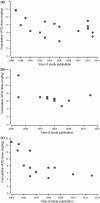New directions for rabbit antithymocyte globulin (Thymoglobulin(®)) in solid organ transplants, stem cell transplants and autoimmunity
- PMID: 25164240
- PMCID: PMC4180909
- DOI: 10.1007/s40265-014-0277-6
New directions for rabbit antithymocyte globulin (Thymoglobulin(®)) in solid organ transplants, stem cell transplants and autoimmunity
Erratum in
- Drugs. 2014 Dec;74(18):2217
Abstract
In the 30 years since the rabbit antithymocyte globulin (rATG) Thymoglobulin(®) was first licensed, its use in solid organ transplantation and hematology has expanded progressively. Although the evidence base is incomplete, specific roles for rATG in organ transplant recipients using contemporary dosing strategies are now relatively well-identified. The addition of rATG induction to a standard triple or dual regimen reduces acute cellular rejection, and possibly humoral rejection. It is an appropriate first choice in patients with moderate or high immunological risk, and may be used in low-risk patients receiving a calcineurin inhibitor (CNI)-sparing regimen from time of transplant, or if early steroid withdrawal is planned. Kidney transplant patients at risk of delayed graft function may also benefit from the use of rATG to facilitate delayed CNI introduction. In hematopoietic stem cell transplantation, rATG has become an important component of conventional myeloablative conditioning regimens, following demonstration of reduced acute and chronic graft-versus-host disease. More recently, a role for rATG has also been established in reduced-intensity conditioning regimens. In autoimmunity, rATG contributes to the treatment of severe aplastic anemia, and has been incorporated in autograft projects for the management of conditions such as multiple sclerosis, Crohn's disease, and systemic sclerosis. Finally, research is underway for the induction of tolerance exploiting the ability of rATG to induce immunosuppresive cells such as regulatory T-cells. Despite its long history, rATG remains a key component of the immunosuppressive armamentarium, and its complex immunological properties indicate that its use will expand to a wider range of disease conditions in the future.
Figures



References
-
- Organ Procurement and Transplant Network (OPTN) Annual Report 2011. http://srtr.transplant.hrsa.gov/annual_reports/2011/default.aspx. Accessed 14 Jan 2014.
-
- Cai J, Terasaki P. The current trend of induction and maintenance treatment in patients of different PRA levels: a report on OPTN/UNOS Kidney Transplant Registry data. Clin Transplant 2010;45–52. - PubMed
-
- Gaber AO, Monaco AP, Russell JA, Lebranchu Y, Mohty M. Rabbit antithymocyte globulin (thymoglobulin): 25 years and new frontiers in solid organ transplantation and haematology. Drugs. 2010;70:691–732. - PubMed
-
- Büchler M, Longuet H, Lemoine R, Herr F, Gatault P, Thibault G, et al. Pharmacokinetic and pharmacodynamic studies of two different rabbit antithymocyte globulin dosing regimens: results of a randomized trial. Transpl Immunol. 2013;28:120–126. - PubMed
-
- Lindemans CA, Chiesa R, Amrolia PJ, Rao K, Nikolejava O, de Wildt A, et al. Impact of thymoglobulin prior to pediatric unrelated umbilical cord blood transplantation on immune reconstitution and clinical outcome. Blood. 2014;123:126–132. - PubMed
Publication types
MeSH terms
Substances
LinkOut - more resources
Full Text Sources
Other Literature Sources
Medical

